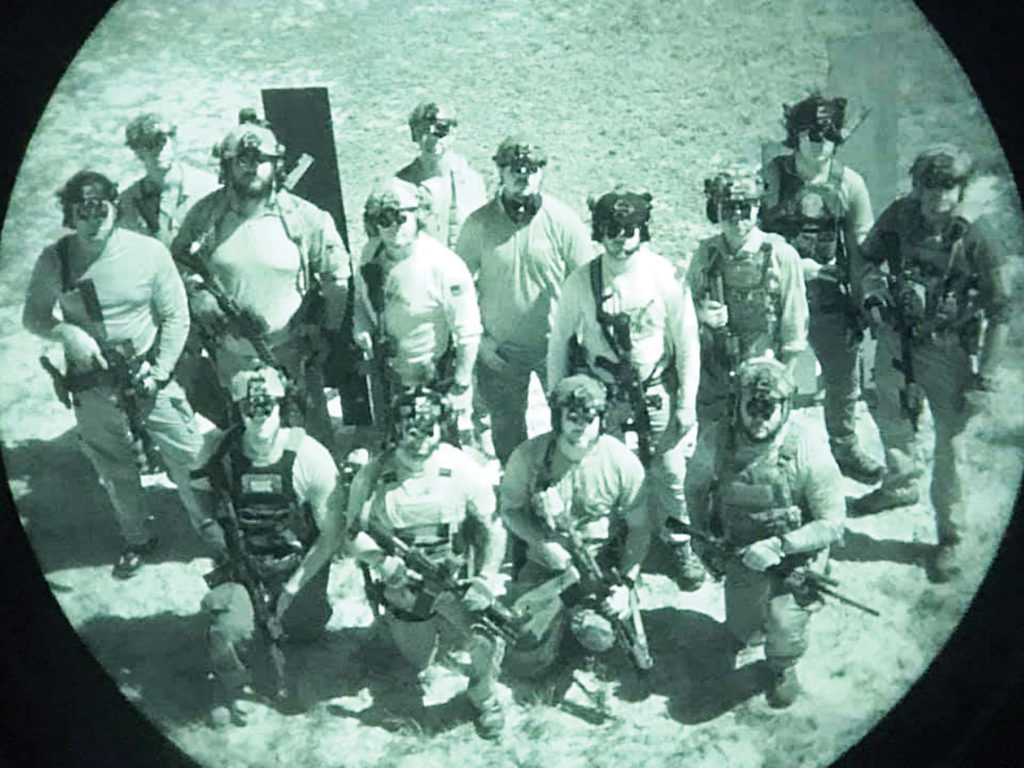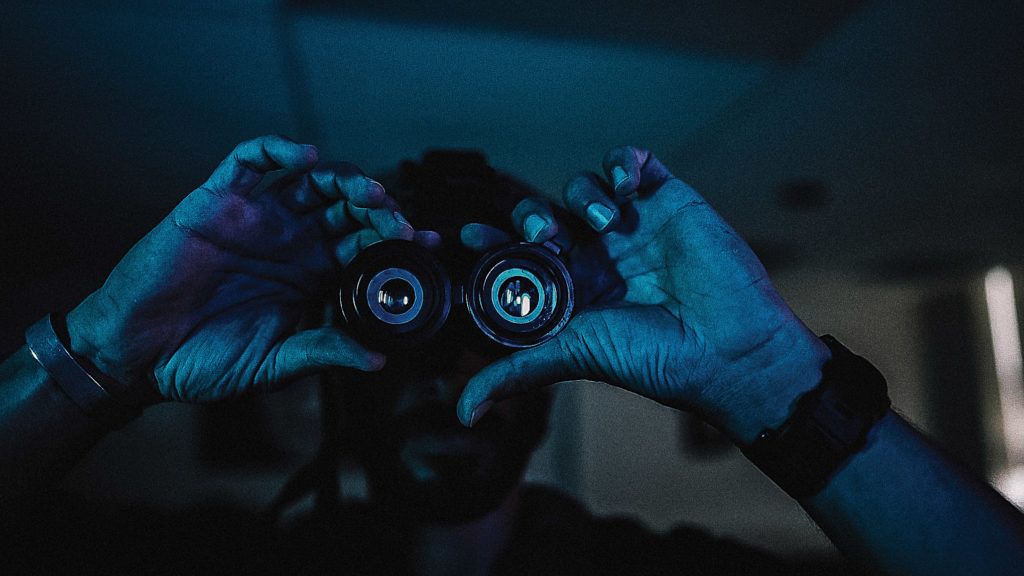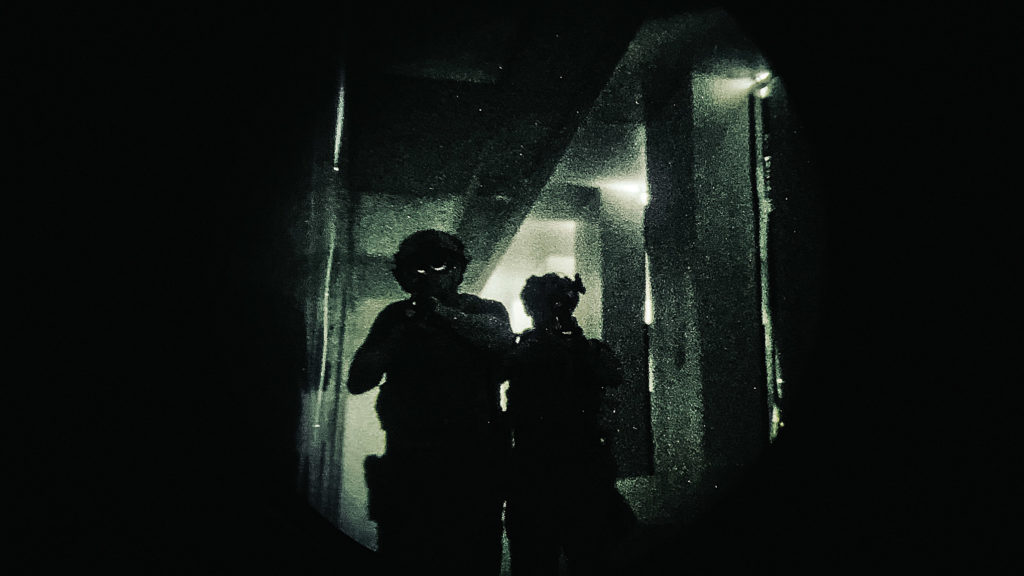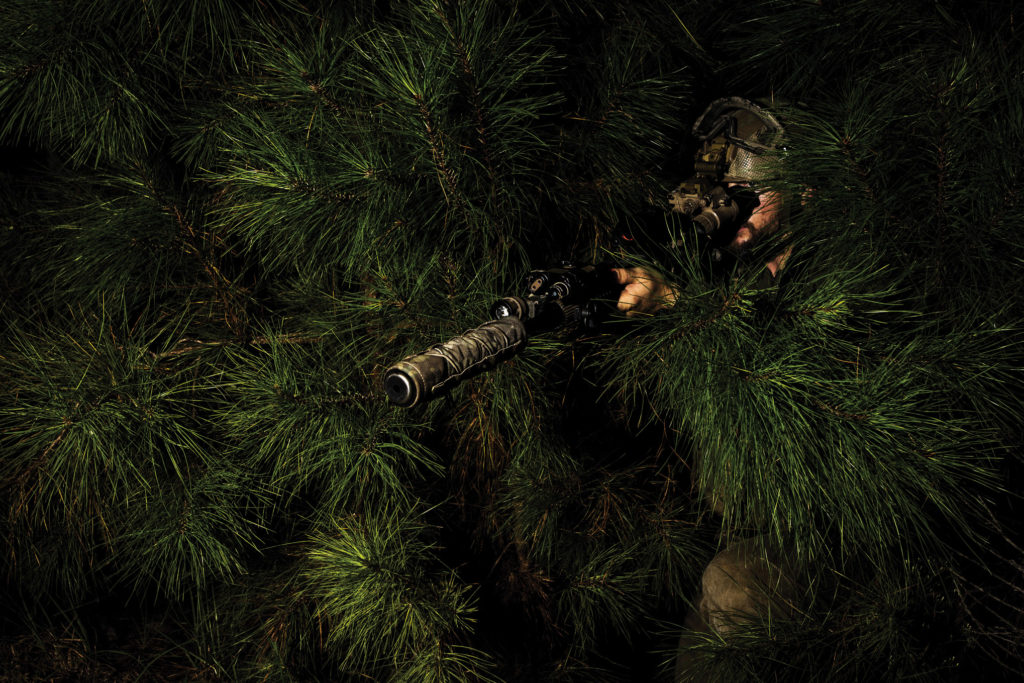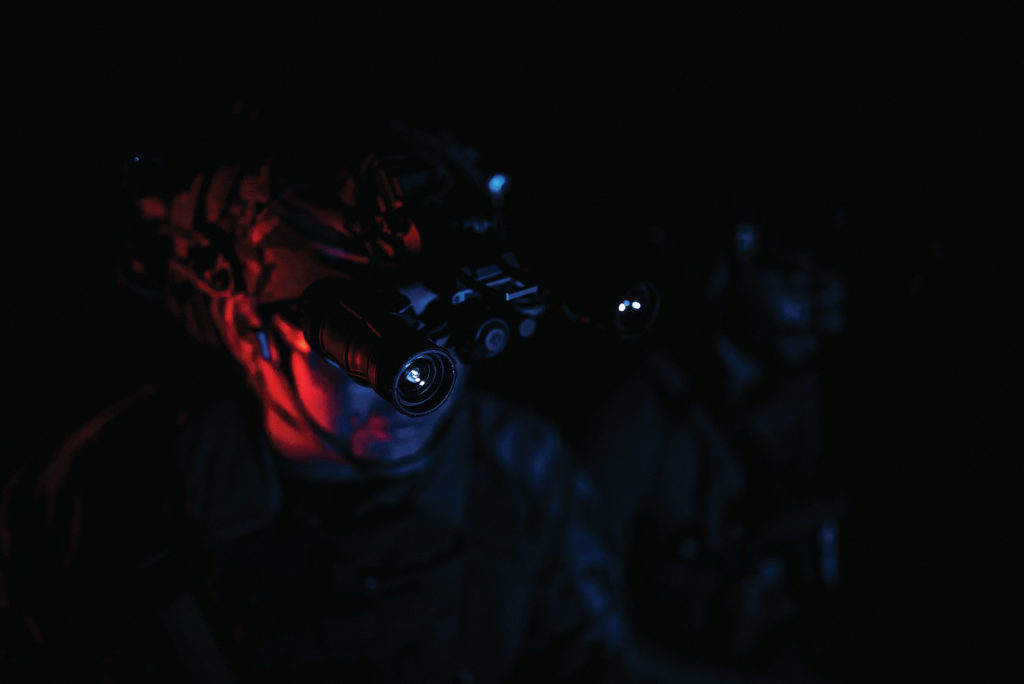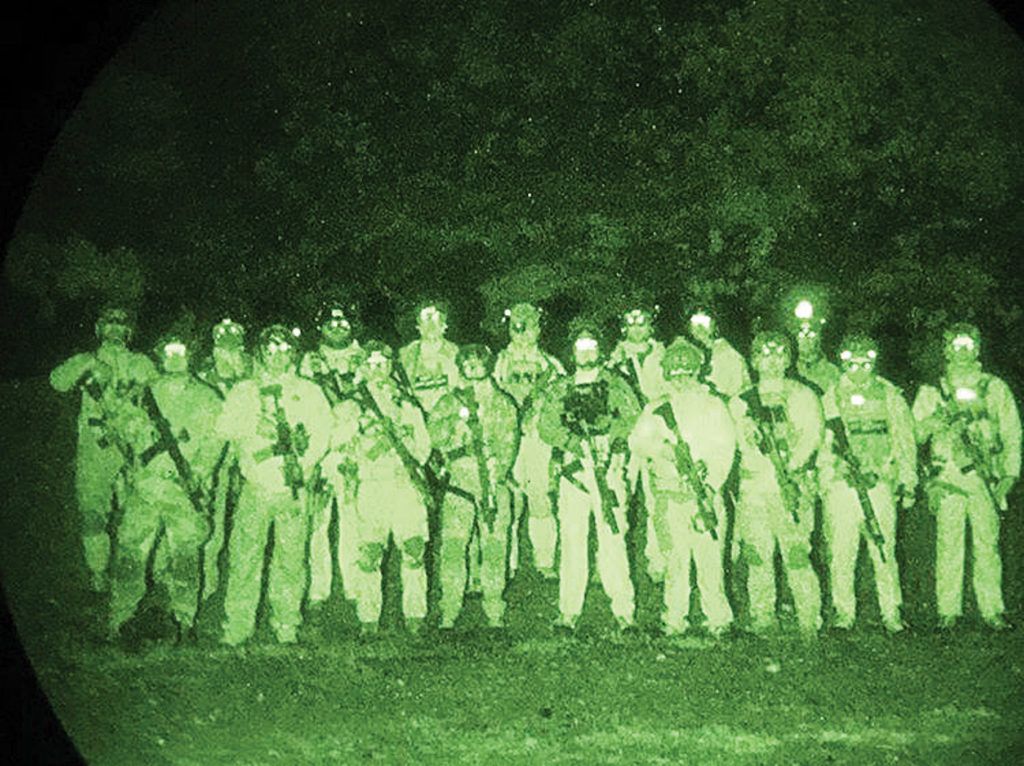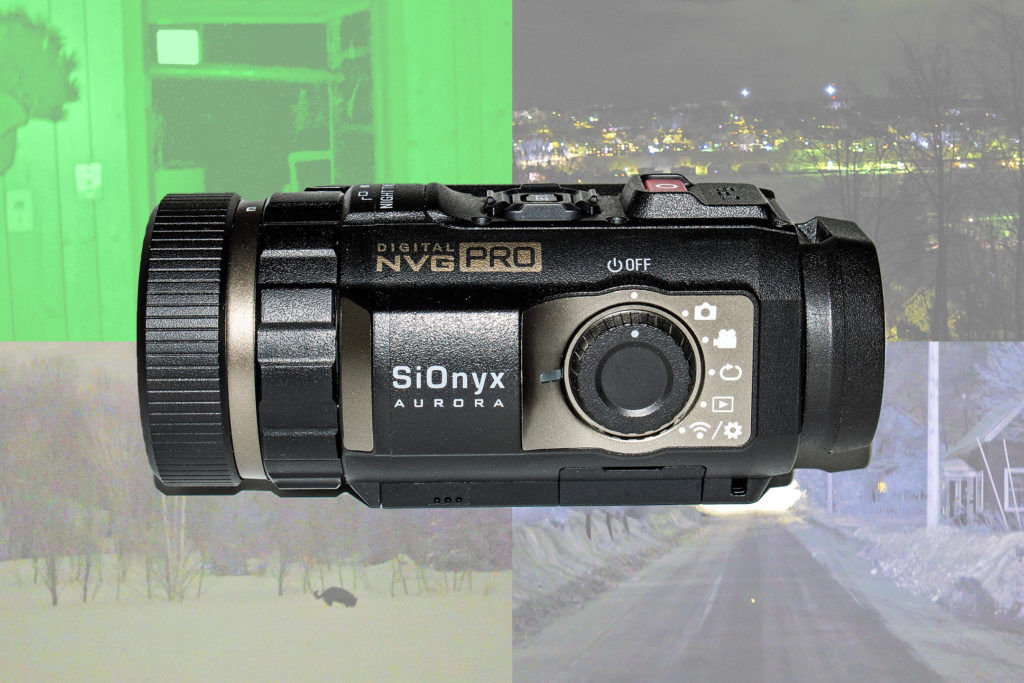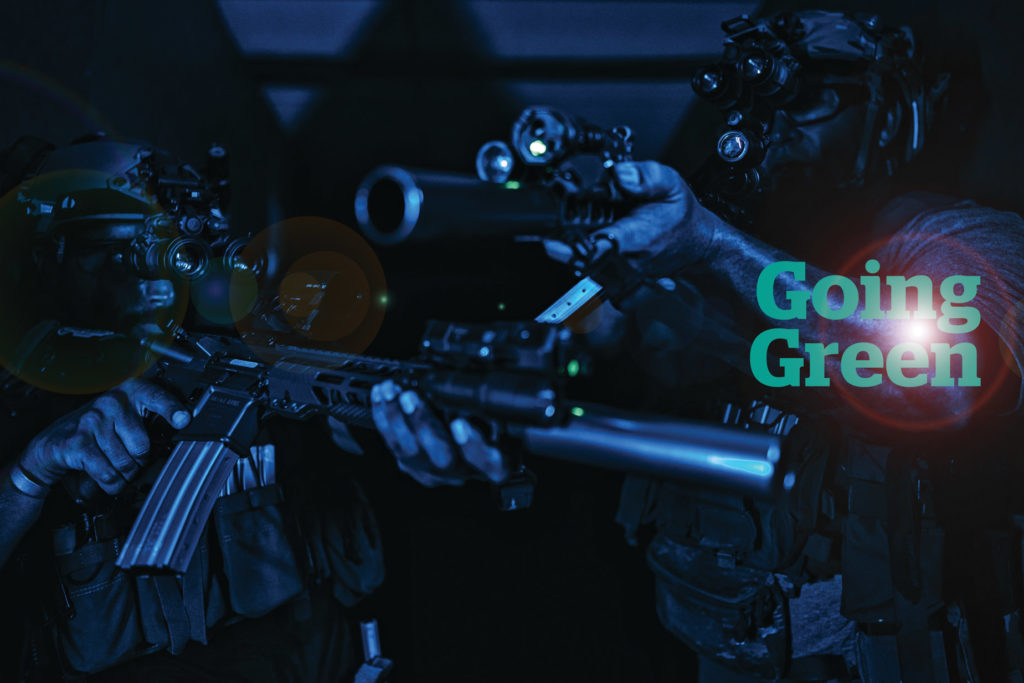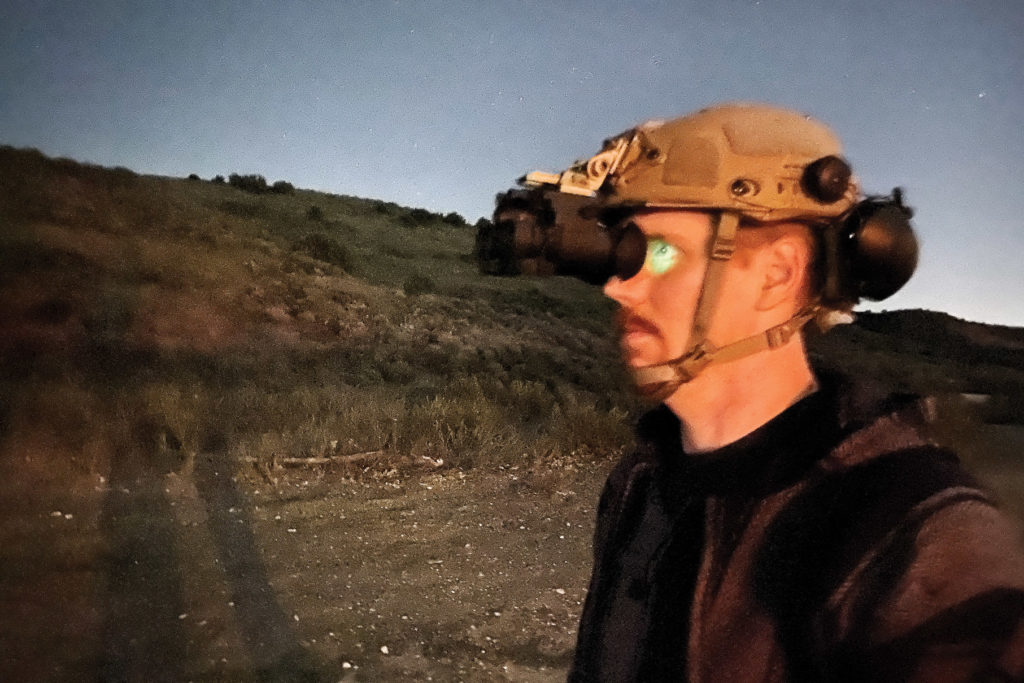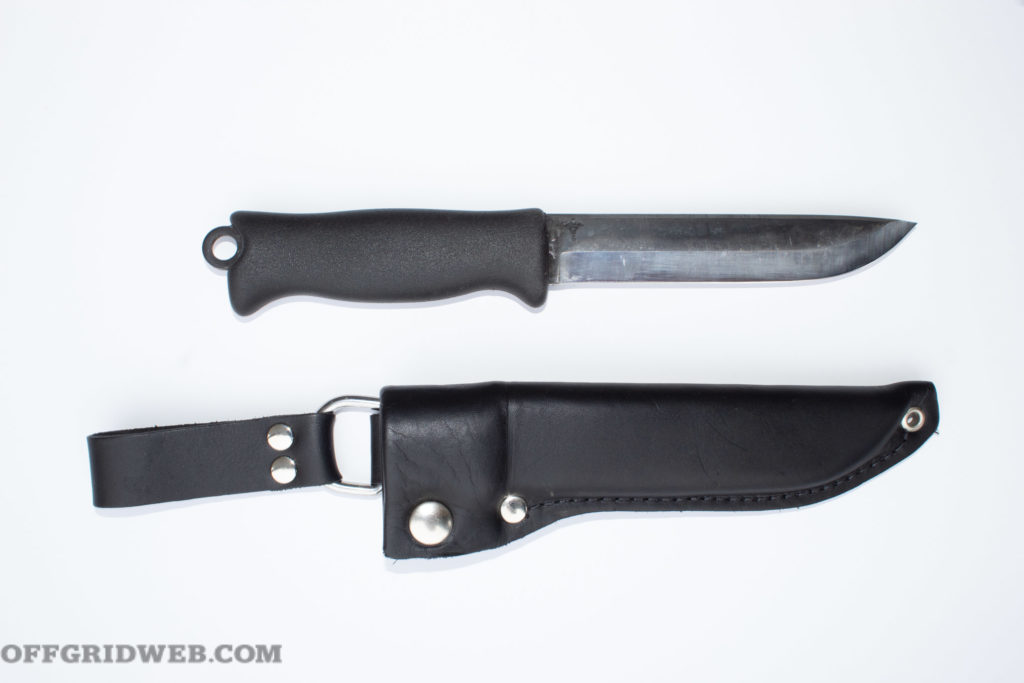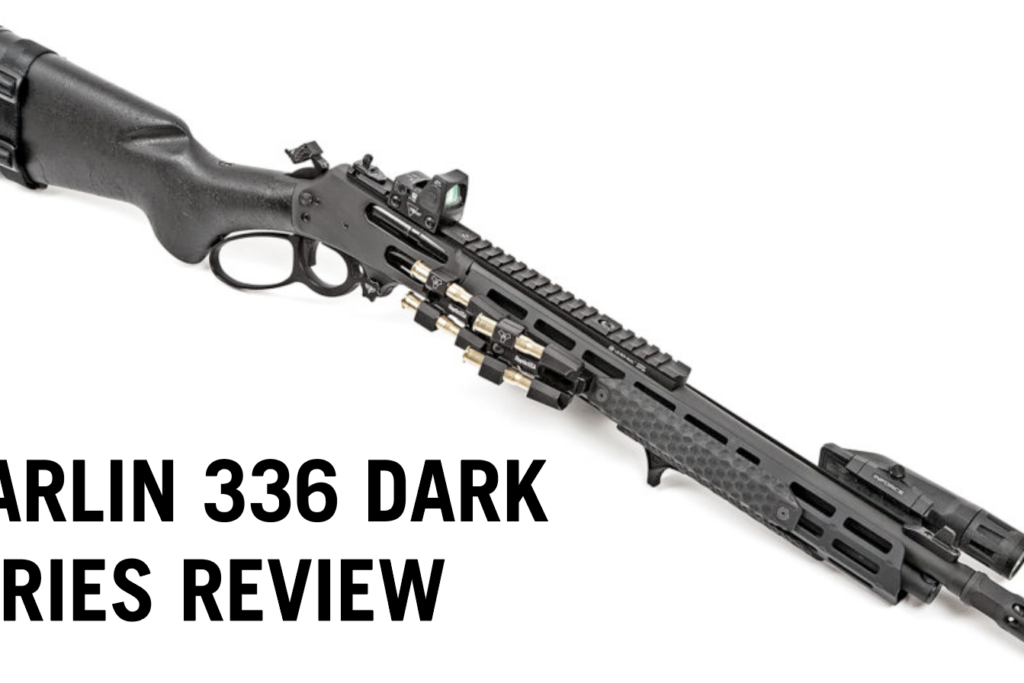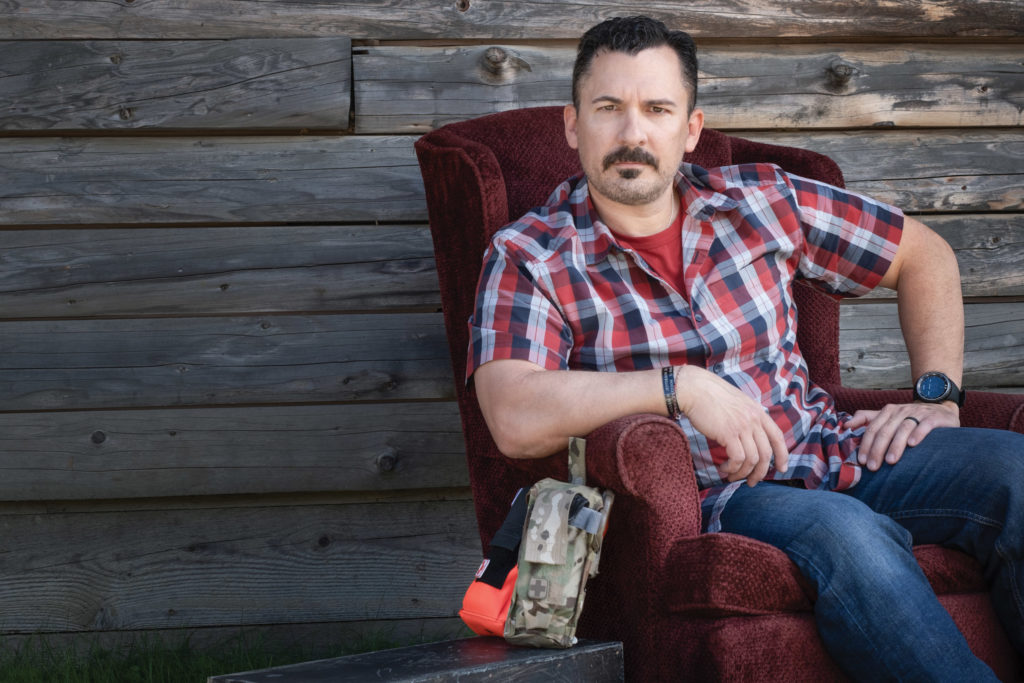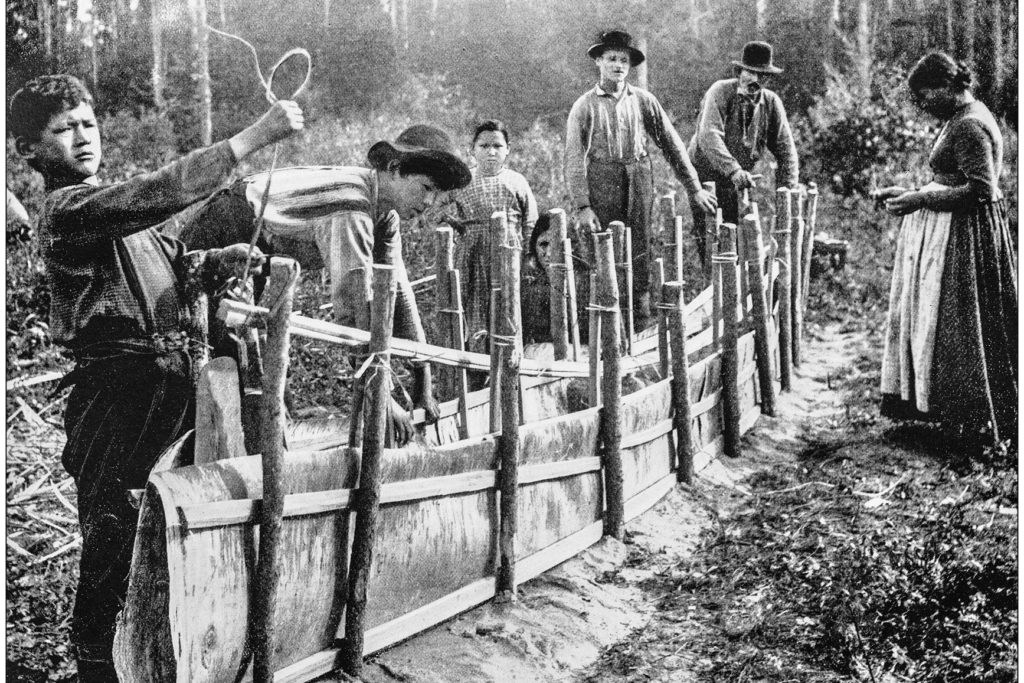Throughout human history, our species has always looked for advantages in both technology and tactics. The rock became the club, which became the spear, which became the arrow, and finally the firearm. The sword was always more important than the shield, and offensive technology was always forward-thinking and progressive. Regardless of time, culture, race, or creed, humans have always looked at our resources and thought, how can we weaponize this? One of the biggest hindrances to warfare has always been darkness — sure, fighting happened at night, but up until recently, it wasn’t conducted the way we do business in this century. And today, what is more evocative of a “Tip-of-the-Spear Operator” than a NODs wearing warfighter.
Enter image intensification, more commonly known as night vision (NV). It’s light amplification on a large scale, turning very small amounts of light photons (be they visible or infrared) into multiplied electrons, then back to photons in a wavelength that our feeble human eyes can see. It’s been around since the 1940s in its infant form, but I’ll spare you that boring lecture. First and foremost, NV was designed for offensive operations — moving to and from a point of origin to close with and destroy the enemy. This is the advantage image intensification has over other technologies that can see into and through the darkness.
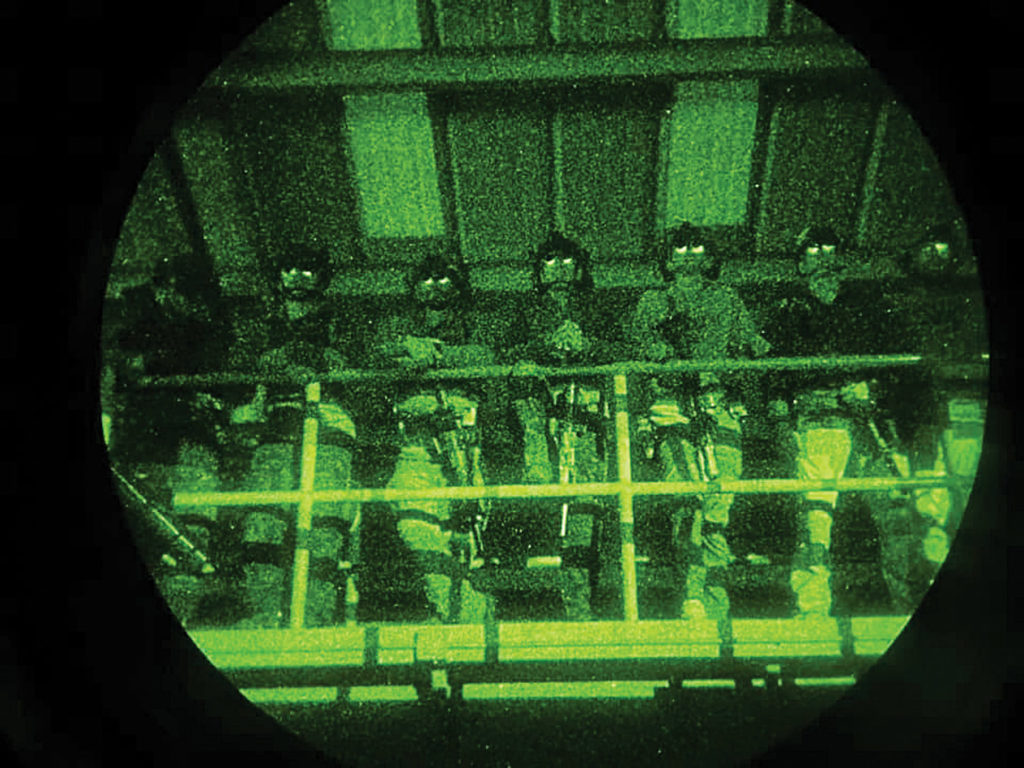
Many will say the “green vs. white” argument boils down to personal preference, but physiological…
This article isn’t about the tactics, techniques, and procedures (TTPs) of NV usage in a survival situation or combat zone. That’s for another night, and best left to others to explain. Here and now, I’ll delve into some of the ins and outs of NV technology and night observation devices (NODs) so that, should you decide to add this amazing technology to your kit, you can be better informed. Much like researching the materials used and the specifications on an AR-15 before you invest in a high-end gun, this will pull back the curtain and explain several things in layman’s terms.
Green or White?
One of the most readily apparent factors of NV is phosphor screen color. A much-debated topic as of the last several years, emotions can and do run deep surrounding this subject. To understand the argument, we must first understand how the human eye works.
The retinas of our eyes have two types of photoreceptors: rods for night and cones for day. Rods are sensitive enough to perceive trace amounts of light, such as silhouettes on a moonlit night, but cannot detect color and offer low visual acuity (sharpness). Cones are far less sensitive to light, but can interpret millions of colors with much greater detail. There are three kinds of cones: red, green, and blue sensitive. Cones also give you spatial acuity, which is why you’re much less likely to stumble or stub your toe in broad daylight than you would be in a dark room. The rod and cone cells are distributed evenly throughout the retina, except in a small central area called the fovea, where there are only cone cells. The fovea is the part used for detailed vision, like reading. This is why your peripheral vision feels less precise than your direct gaze.
It takes about a thousand times more light to activate the color cone cells than it does the monochrome rods, which is why detail and depth perception are much better when using both cones and rods, instead of just rods. Rods don’t provide much detail. The goal of NODs is to take light that might only be detectable to your rods, and intensify the image enough to allow your cone cells to detect it clearly.
When using green phosphor (GP) NV we use our green cone cells, which make up only about one-third of our day vision. Humans generally don’t use rod cells with green phosphor NV systems or NODs.
With white phosphor (WP) NV (white light being the sum of all colors) we engage all three types of our day vision cones. So, WP is fully engaging our day vision mechanisms (cones) and even some of our NV mechanisms (rods). WP also has a strong blue component in the 400-nanometer wavelength range, where we engage a more substantial portion of our rod cells.
Using a WP NODs is akin to being able to use more of your brain processing power to think through and solve problems. You can certainly accomplish similar tasks with GP, but you’ll probably do so faster with WP due to the physiology involved. It delivers more light data to your brain. This leads to reduced fatigue because you’re not working as hard to gather the same amount of information. Contrast is higher and the data feed is broader.
You might be about to retort, “But Sam, the human eye can detect more shades of green than any other color in the visible spectrum!” Yeah, I’ve heard that a time or two. Here’s what you need to know about that — the dark-adapted human eye is capable of detecting more shades of green than any other color. What happens when you power up a bright phosphor screen in front of your eye? Bingo, no longer dark-adapted, so that factoid goes right out the window. In scientific terms, there’s a chemical compound in your eye called rhodopsin that’s produced at night. Once exposed to bright light, it photo bleaches.
Colorblindness is generally a genetic mutation of one of (or a combination of) the red, green, or blue cone photoreceptor cells in your eyes. True color blindness genes are carried on the X-chromosome, which is why it’s spread from grandfather to grandson. Very rarely is it expressed in women. If you’re truly colorblind, then that can affect your choice a bit, but WP probably still comes out on top for the reasons I outlined above. If you can’t see green, then WP is even more clearly the choice. If you can’t see red and blue, then maybe GP is the better choice for you.
That said, much of this argument still comes down to personal preference for many people. Nothing compares to trying both GP and WP in-person over an extended period of time to literally see which phosphor color one prefers. The physio/neurological basis for the detail, contrast, and fatigue advantages of WP are true regardless, but remember this as well: Some people are born with more of one type of photoreceptors than other folks. The same can be said about rods, as some people’s natural unaided NV is better than others, so genetics can come into play a little. Finally, individual tube and NODs specs and NV generation are important variables to consider. As we’ll explain momentarily, these issues need to be taken into account independently of phosphor choice for a truly useful comparison of WP versus GP.
Next, we must get into the nitty-gritty of the tubes’ actual performance. Think of tube specs as what a dyno readout says about an engine’s horsepower and torque. In my opinion, the following are the five most important tube data points. It should be noted that there are others, such as luminance gain and high light resolution, that aren’t included due to their secondary nature as NV tube spec data points. This is a reference for U.S. Gen 3 systems and data sheets.
Photocathode Sensitivity: Photocathode Sensitivity is the PC’s ability to convert Photons to electrons. A higher PR usually corresponds to good SNR numbers. The minimum is 1,800 for the OMNI 8 contract. 1,800 is good, anything above 2,000 is very good. It matters a great deal to have properly matched photocathode numbers for a dual-tube system, +/- 100 is generally the range I adhere to when building/assembling dual-tube systems. This will prevent one tube from appearing noticeably brighter than another while in operation.
EBI or Equivalent Background Illumination: This is the amount of light you see through NODs when an image tube is turned on, but no light is on the photocathode. EBI is affected by temperature; the warmer the NV device, the brighter the background illumination. EBI is measured in lumens per square centimeter (lm/cm2). The lower the value the better. The EBI level determines the lowest light level at which an image can be detected. Below this light level, objects will be masked by the EBI. The lower the better. For example, this will determine the contrast of a ridgeline against the sky behind it. EBI is an often-overlooked data point, but is a very important one — many times the most important in terms of detecting and/or differentiating objects.
SNR or Signal to Noise Ratio: Plays a key role in NV performance. The role of the micro-channel plate, SNR is the unit’s ability to transfer a strong signal from input to output and is usually referenced as a ratio (19:1, for example). This measures the light signal reaching the eye divided by the perceived noise as seen by the eye. The higher the difference between the two numbers, the better. As the light level drops, scintillation (visual noise or graininess) will be noted sooner on a tube with lower SNR versus one with higher SNR.
Center Resolution: Screen resolution measured in line pairs per millimeter (LP/mm). The higher the better. Usually listed in line pair increments of 57, 64, 72, 81, and so on. When a center resolution is listed, the line pair measurement could in fact be higher, but not high enough to cross the threshold of the next listed LP resolution. For example, a 64-line pair listed tube could in fact be as high as 71-line pairs, but because it doesn’t meet or exceed the 72 limit it cannot be listed as such.
Line pair resolution is generally not as important as many people make it out to be. For example, the human eye cannot tell the difference between a 64- and a 72-line pair when viewed through a 1x system such as a PVS-14. However, when used or viewed in clip-on NODs alongside a magnified rifle optic, a higher center resolution is preferred and often noticeable for better resolution/image quality.
Halo: Bloom or halo when looking at light source, or the ability to control the bloom when viewed. The lower the value the better. Objects can be masked or hidden behind bright blooms of light in tubes that have higher halo values. Lasers can also have more apparent bloom off certain objects in some tubes as opposed to others due to this attribute. A high halo value can contribute to a lowering of tube resolution (high light res) thus affecting what can be seen/detected by the user.
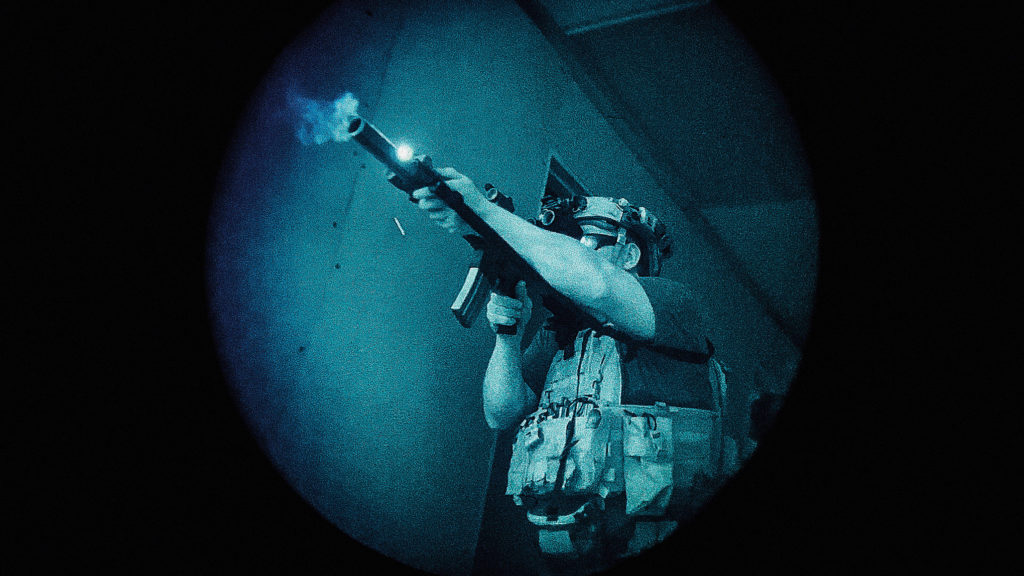
Halo comes into play when looking at a light source that has the potential to overload receptors in your NV tubes….
FOM or Figure of Merit: This is simply center resolution multiplied by signal to noise ratio. The higher the value the better. It’s a quick, down-and-dirty way to determine the performance of a tube, mostly for export purposes set forth by the U.S. State Department. Because FOM measures only two data points, it’s not the be-all and end-all of a tube’s performance. In other words, you could have a low to average FOM tube that can, in certain lighting conditions, outperform a tube with a higher FOM, or at least match its real-world performance. EBI, photocathode sensitivity, and halo are three very important data points to take note of when looking at a tube.
Are Tube Specs Important?
This is an often-asked question and the short answer is maybe, maybe not. If you’re using a NODs as a stand-alone unit without supplemental infrared (IR) laser/light energy, such as for astronomy purposes, then a tube with high data points overall is going to do more for you than a lower performing system. Notice I didn’t say FOM — as I stated previously, FOM is not the be-all and end-all in a system, though it should be noted.
Now, can a human tell the difference between a 30 SNR tube and a 37 SNR tube? Not in all but the darkest of lighting conditions. Even then maybe not, depending on the viewer’s eyesight. You can chase NODs tube specs until you’re blue in the face, and in reality gain nothing but wasted time and energy. Go with what I list below as a template for tube specs, and try not to get too wrapped around the axle about them.
For a thin-filmed Gen 3 system some good numbers to go off of as of the writing of this paper would be as follows:
- Photocathode: 1,900 or higher
- EBI: 1.5 or lower
- SNR: 26.0 or higher
- Center Resolution: 64 LP/mm
- Halo: 1.0 or lower
- FOM: 1728 or higher
Moving onto an unfilmed system, good numbers to go off of are as follows:
- Photocathode: 2,000 or higher
- EBI: 1.0 or lower
- SNR: 30.0 or higher
- Center Resolution: 64 LP/mm
- Halo: 0.8 or lower
- FOM: 1920 or higher
If you have NODs that exhibits most or all of these numbers, you possess a very solid performing system.
If you’re using supplemental IR lighting in conjunction with NODs for detection and targeting, then that’s going to boost the capability of a lower performing system significantly to the point where tube specs are going to matter less and less. This is especially true at close ranges under 100 meters. Put simply, a powerful laser/illuminator is going to do more for you than tube specs will almost every time.
Ultimately though, it comes down to training with your gear and training your eyes how to observe your environment. As you spend more time using NODs and acclimating your eyes to them, you’ll be able to see things with a lower performance system than folks who are untrained and unaccustomed to using a higher performance system. If I was behind the wheel of a high-performance Formula 1 car, a skilled racecar driver could still beat me around a track in a street car simply because I don’t have the experience to make the most of that highly tuned vehicle.
The opinions expressed in this writing are mine and mine alone. Technology advances as time goes on, so in the future some (or much) of what’s said is sure to change and/or be updated. If you’re seeking further info, I welcome you to watch some of the informative videos I have on my SilentSolutions YouTube channel or attend a Greenline Tactical class taught by me and Don Edwards.
About the Author
Sam Houston is a 10-year Veteran of the U.S. Navy, where he flew onboard P-3C Orion surveillance aircraft as a flight tech and sensor operator supporting combat operations in multiple theaters. Transitioning to the civilian sector, he became a qualified UAV operator/maintainer on RQ-27’s, logging over 2,000 hours supporting conventional and Special Operations Forces in Iraq and Afghanistan, both on the battlefield and remotely, as well as a thermal and electronic surveillance sensor operator on RC-12 aircraft supporting U.S. interests overseas. He’s currently in the Florida National Guard as a forward observer.
Sam owned and operated a NV hog hunting outfitting guide service, taking clients into the Florida swamps and forests to search, locate, and harvest feral pigs with the aid of NV and thermal optics. In 2015, he was hired by TNVC and ran the NV Goggle build and repair programs and continues at TNVC as the special programs manager and a night vision technical advisor. Additionally, Sam helps run the Night Fighter NV Training Program with Don Edwards at Greenline Tactical, and works for John Lovell at the Warrior Poet Society as an assistant instructor.
MORE ON NIGHT VISION
- GBRS Group: Shadows that Bite.
- Night Vision Helmet Setup Guide.
- Night Vision 101.
- Sionyx Aurora Pro: Color Night Vision Review.
Related Posts
The post NODs and Night Vision Tubes: Evaluating what Counts appeared first on RECOIL OFFGRID.



